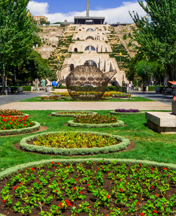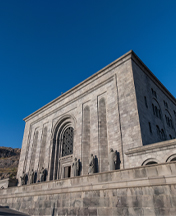Yerevan is one of the oldest cities in the world, with a history dating back to 782 BC as an important administrative and cultural centre. Archaeological excavations have uncovered remnants of the ancient citadel, and visitors can explore the Erebuni Fortress to learn about Yerevan's early days and see artifacts from this ancient civilization.
Over the centuries, Yerevan was ruled by various empires, including the Persians, Byzantines, Arabs, and Ottomans. Each of these rulers left their mark on the city, contributing to its rich cultural tapestry. In the Middle Ages, Yerevan became an important trading centre, strategically located on the Silk Road, connecting Europe and Asia.
In 1828, Yerevan became part of the Russian Empire, a period that led to significant urban development. The city's modern layout and architecture were largely shaped during the Soviet era when Armenia was incorporated into the Soviet Union in 1920. Under Soviet rule, Yerevan rapidly developed from a small provincial town into a bustling metropolis. The city's iconic "pink" buildings, made from volcanic tuff stone, are a legacy of this period.
One of the most tragic events in Armenian history occurred in 1915 during the Ottoman Empire, when the Armenian Genocide claimed the lives of 1.5 million people. Yerevan became a focal point for the survival and resilience of the Armenian people. The Armenian Genocide Memorial, located on a hill overlooking the city, serves as a solemn reminder of this dark chapter in Armenian history and a testament to the nation's endurance.
After gaining independence from the Soviet Union in 1991, Yerevan began a new chapter as the capital of the Republic of Armenia. Today, it is a vibrant city that honours its ancient roots while embracing the future. With its rich cultural heritage, thriving arts scene, and stunning natural surroundings, Yerevan is a city where history is not only preserved but celebrated in everyday life.

















